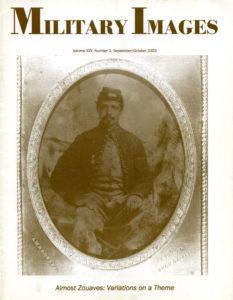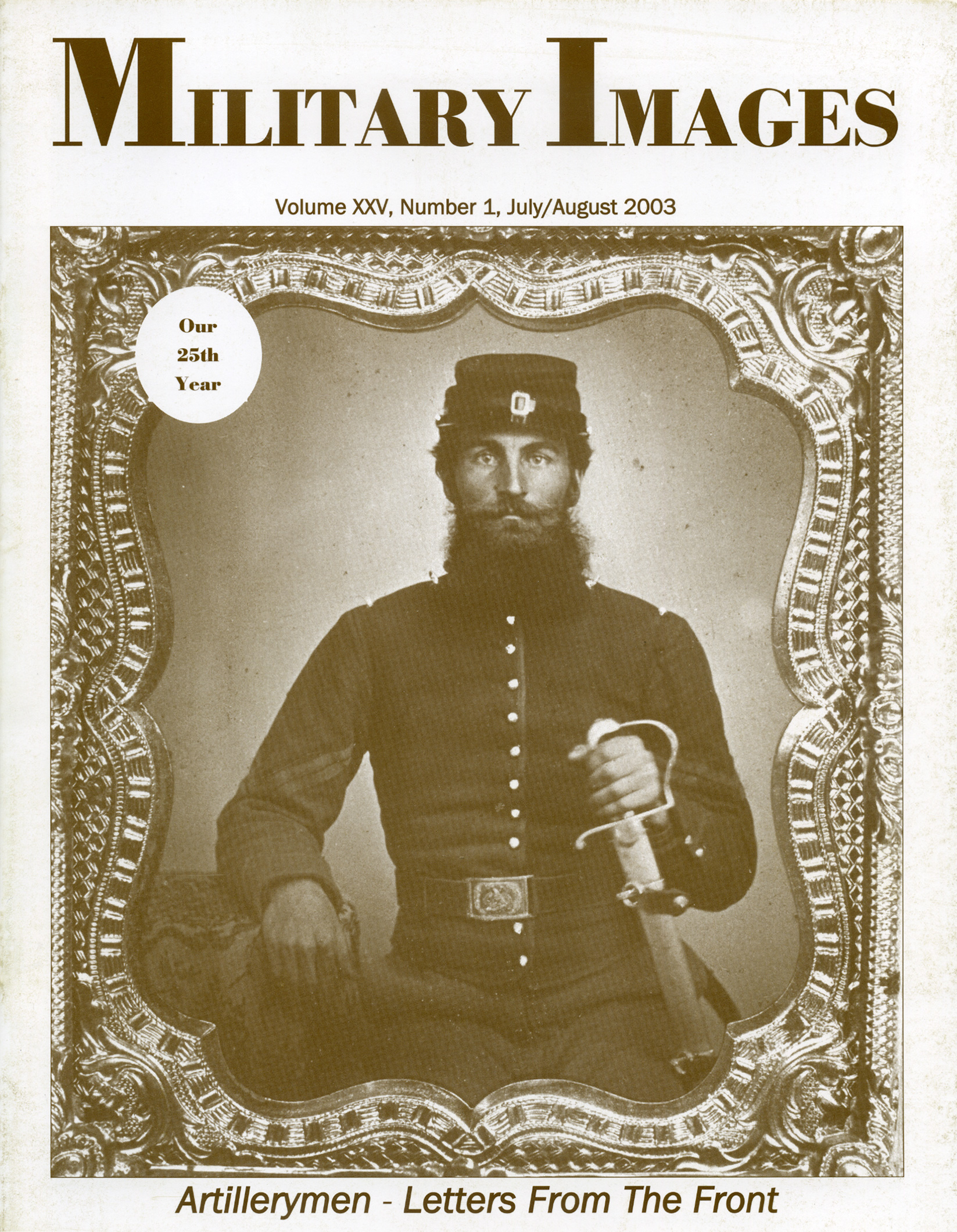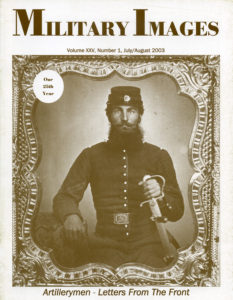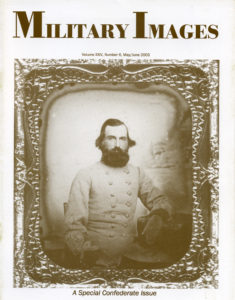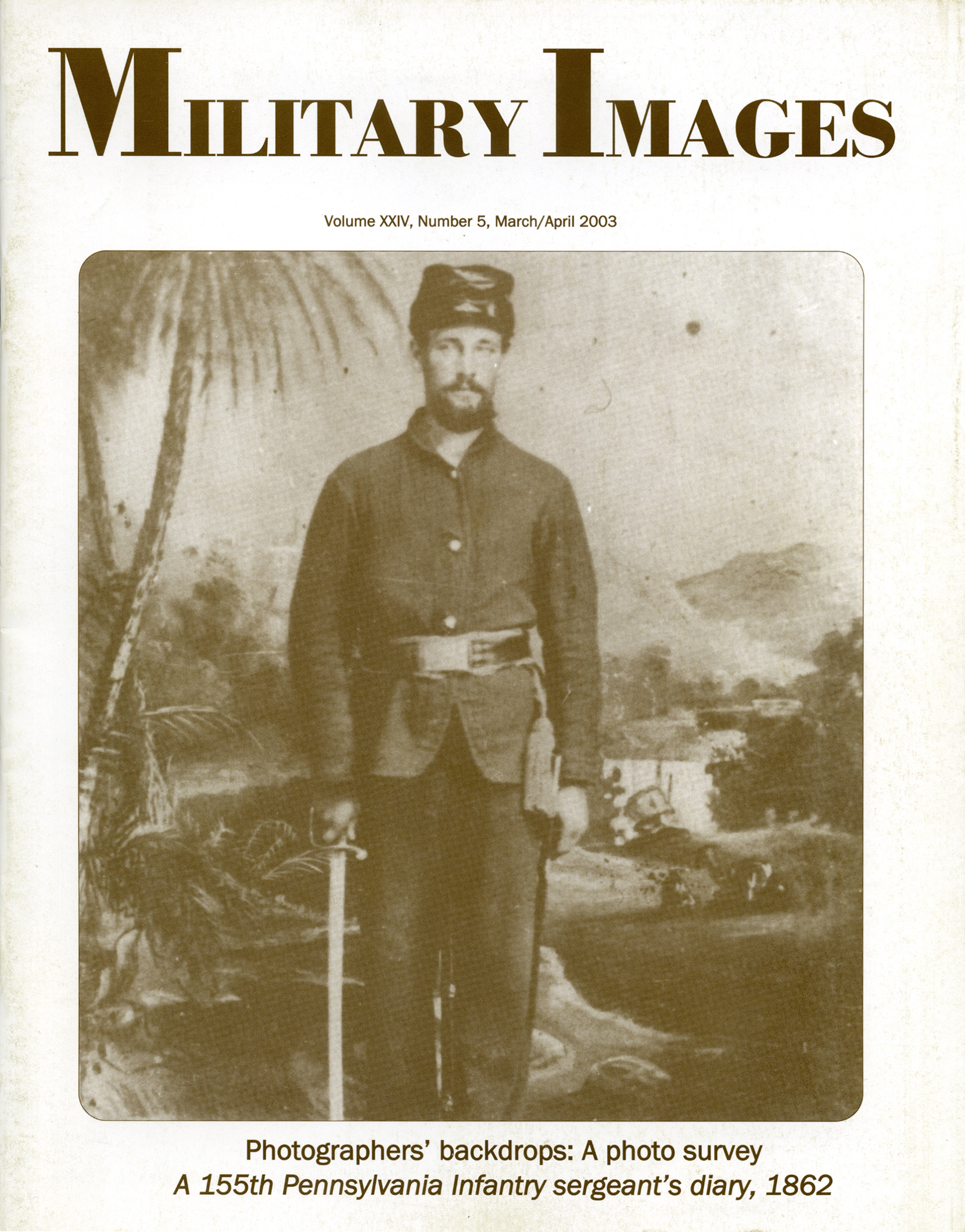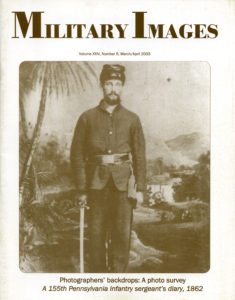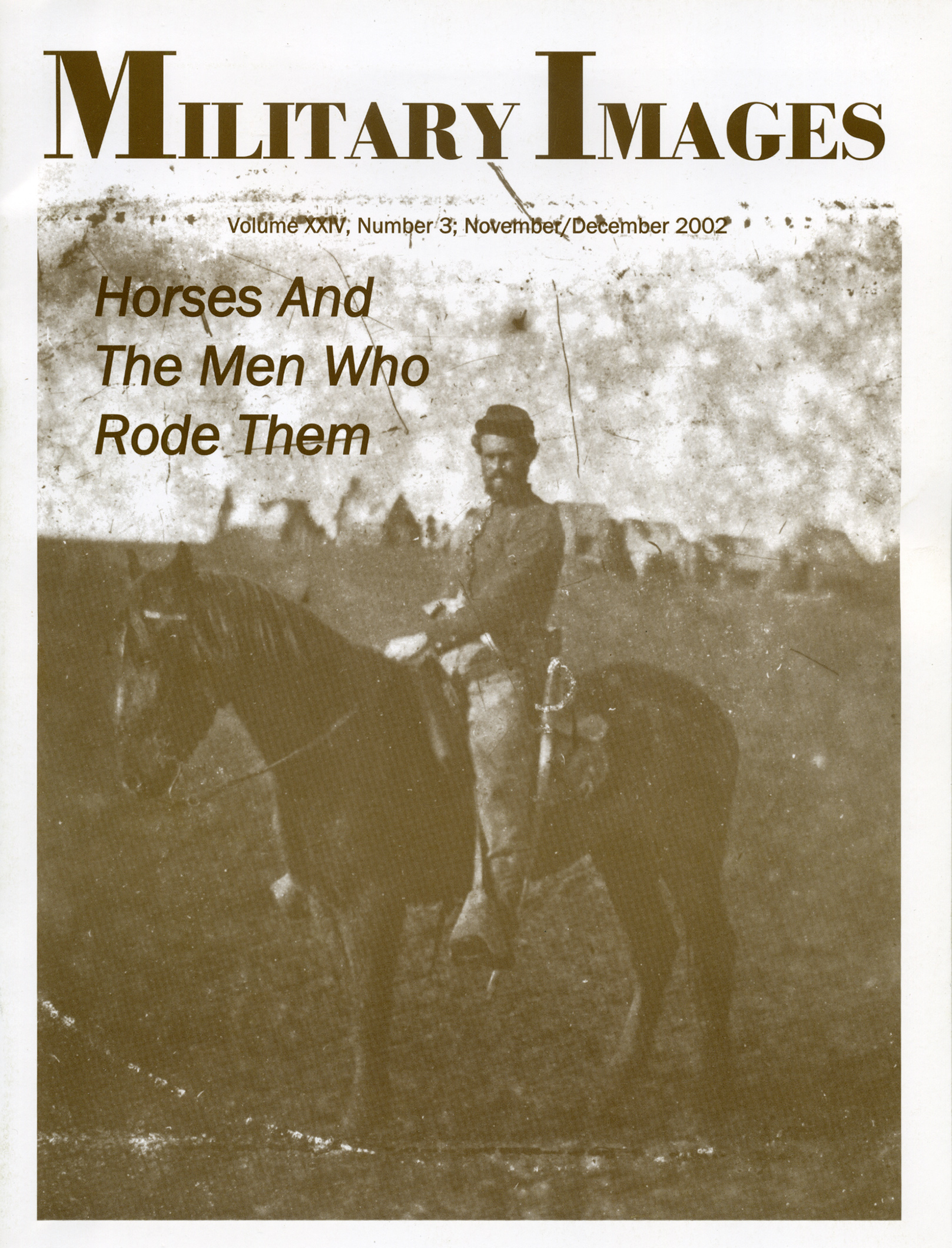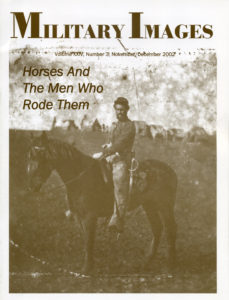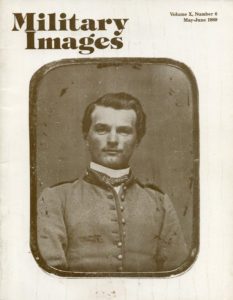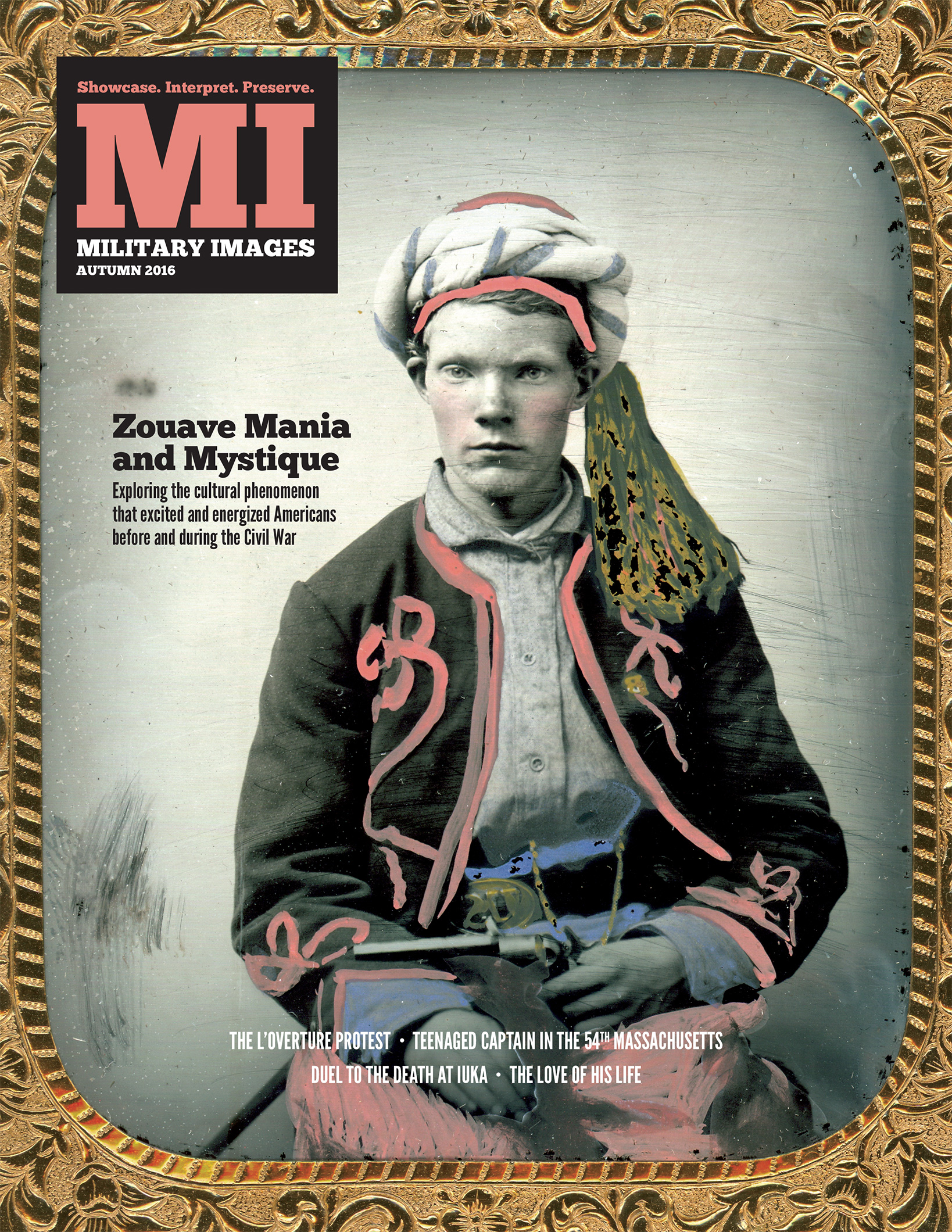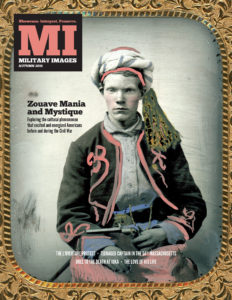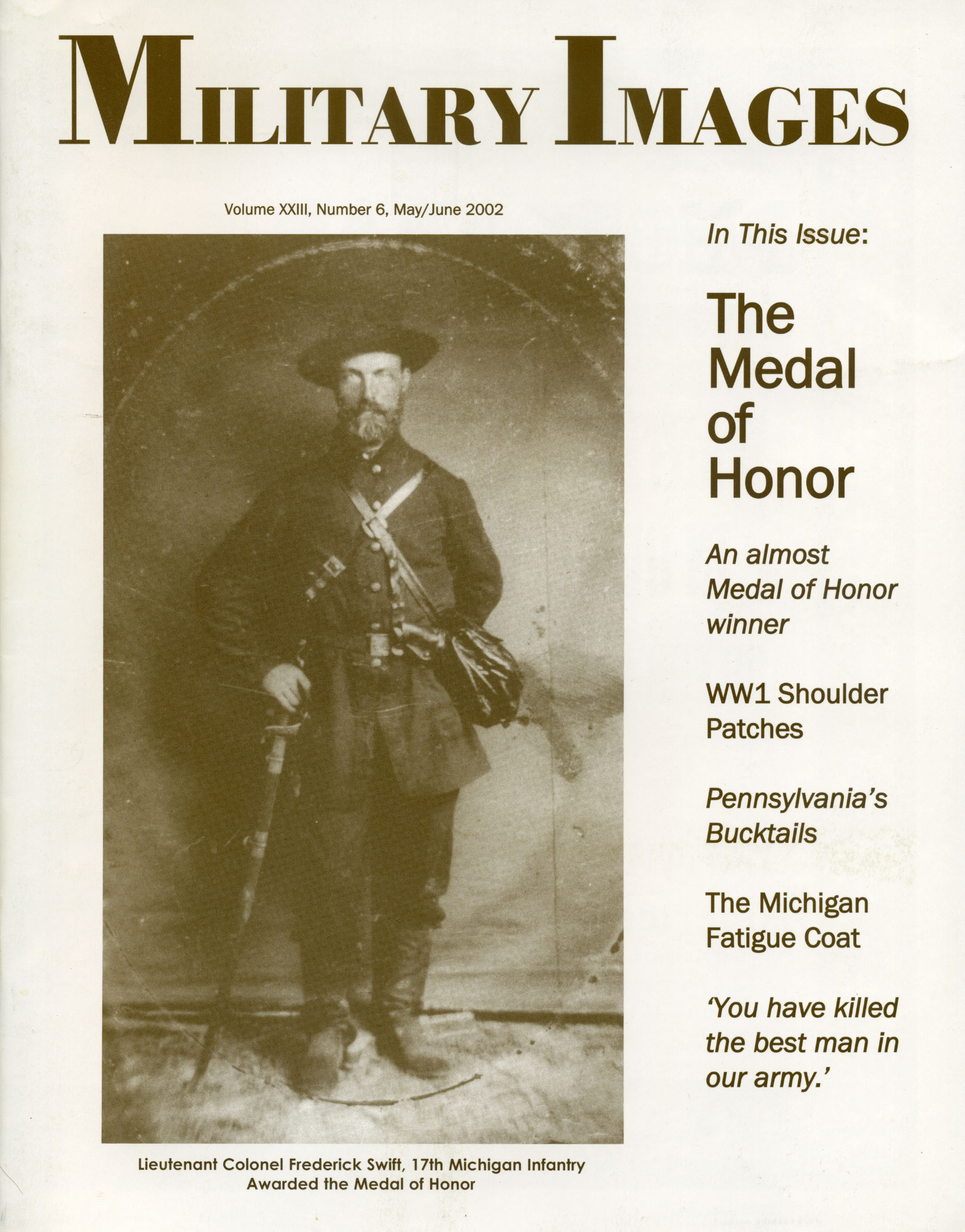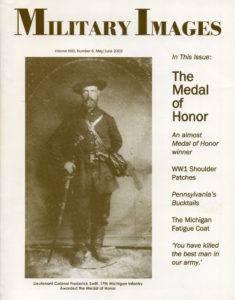The complete issue
Vol. XXV, No. 2
(40 pages)
Print edition: Visit our store to check availability
Digital edition: Visit JSTOR.org to purchase
Subscribe to MI
Explore the MI Archives: Browse | Advanced search | Tutorial
Inside
Cover image
An image from the late Wendell Lang Jr. collection pictures a private who served in the 72nd Pennsylvania Infantry.
Table of Contents (p. 1)
Mail Call (pp. 2-4)
Feedback includes several comments related to a rare weapon, a cap badge and a sword.
Passing in Review (pp. 5-6)
Seven publications are listed, including Success Is All That Was Expected: The South Atlantic Blockading Squadron During the Civil War (Brassey’s Inc.) by Robert M. Browning, Until the End (Simon & Schuster) by Harold Coyle, The 14th U.S Infantry Regiment in the American Civil War (Burd Street Press) edited by C. Russell Hunley, Gods and Generals, Photographic Companion (Thomas Publications) by Rob Gibson, The National Guard: An Illustrated History (Brassey’s Inc.) by Michael D. Doubler and John W. Listman Jr., “Seeing the Elephant,” Raw Recruits at the Battle of Shiloh (University of Illinois Press) by Joseph Allen Frank and George A. Reaves and Gods and Generals, The Illustrated Story of the Epic Civil War Film (Newmarket Press) by Ronald F. Maxwell.
“True” Zouaves (p. 7)
Quotes from an 1861 book, The Military Hand Book, describe the Zouave craze and the care in which the uniforms are selected. Three portraits illustrate the text, two of which are identified: Pvt. Edmond Thompson of the 17th New York Infantry and Pvt. George Washington Lendeveq of the 165th New York Infantry.
Uniforms & History by Michael J. McAfee (pp. 8-9)
A brief history of the regiment is illustrated with three unidentified portraits.
Pennsylvania “Zouaves” by Royall Nibley (pp. 11-13)
Two Pennsylvania regiments, the 72nd and the 95th, otherwise totally unrelated, shared the same style Zouave-like jacket. The narrative includes an image of the jacket and eight portraits. Only one soldier is identified, Pvt. William Stewart of the 72nd.
“Old Four Eyes Is Here” (p. 14)
Two bespectacled Union soldier portraits illustrate a narrative about the use of eyeglasses during the Civil War.
Scenes from the Battle of Mobile Bay (pp. 15-17)
A total of 13 images of the defenses of the bay and photographs of the Hartford and Tennessee are featured in this survey.
“A Brave and Efficient Officer:” Charles Roberts of the 124th Pennsylvania (p. 18)
Roberts served in the Pennsylvania regiment for his entire enlistment. he survived the war and lived until 1895.
A World at War (pp. 19-23)
There was fighting almost everywhere internationally while the American Civil War was in progress. They include The Maori Wars, War of the Triple Alliance, War of Italian Unification, The Polish Rebellion, The Second Opium War, The Mexican Adventure, The Shimonoseki Strait and The Second Schleswig-Holstein War. All of these conflicts are illustrated with portraits.
“The Worst Times We Have” (p. 24)
A stereoview of African American soldiers at Battery Wagner on Morris Island, S.C., in 1863 is the focal point of this story.
“We Thought That He Was Dead” by Mike Fitzpatrick (pp. 25-26)
Earnest Dudley Davis of the 174th Ohio Infantry was struck by a bullet in his head at the Battle of Overalls Creek, outside Murfreesboro, Tenn., on Dec. 4, 1864. As a result he received his nickname, “Dud.” Images of Davis and James Briggs of the 174th illustrate the text.
Post-War Navy Uniforms (pp. 27-28)
U.S. navy uniforms, according to the author, made only slow, minor changes after the Civil War. Examples are shown in six portraits, including Passed Asst. Paymaster George N. Read, 1st Asst. Eng. Benjamin C. Bampton, Lt. Oscar W. Farenholt, Asst. Surg. Daniel N. Bertolette
The Court Martial of Levy Lincoln (p. 29)
1st Lt. Levi Lincoln of the 34th Massachusetts Infantry got into an argument with a railroad conductor that ended with Lincoln under arrest and eventually court-martialed. This is his story.
Serving Unto Death (p. 30)
A sharpshooter shot and seriously wounded Chaplain Thomas L. Ambrose of the 12th New Hampshire Infantry at Petersburg, Va., on July 24, 1864. Ambrose later died of his wounds. Chaplain Arthur Buckminster Fuller of the 19th Massachusetts Infantry died at Fredericksburg, Va., in December 1862.
False-Embroidered Infantry Horns by Dr. Howard G. Lanham (pp. 31-32)
Not all infantrymen wore issue cap badges. Instead, they wore metallic false embroidered emblems. A total of 7 portraits illustrate the text.
An Early Air Raid by Leonard J. Jacobs (pp. 33-34)
One American Expeditionary Force unit, the 355th Infantry Regiment of the 89th Division, was on the receiving end of something new in warfare—an air attack. The story of this event is illustrated with a portrait of the author’s father, Evert Jacobs. He poses with Rudoplh Pihl of Rockford, Ill., and Harry W. Curtis. Also pictured is the troop ship Leviathan and the 354th Ambulance Company, 314th Sanitary Train, 89th Division.
A Short History of Kentucky Guerrillas by John Sickles (pp. 35-36)
A state whose citizens represented divided loyalties Kentucky became a hotbed of guerrillas during the Civil War. The narrative is illustrated with images of Samuel O. “One Armed Berry” Berry with Marcellus Jerome Clark (Sue Mundy), Brig. Gen. Stephen G. Burbridge and Henry Magruder.
Who Are These Guys?
A total of three images are included in this feature.
Sutler’s Row (pp. 38-39)
The Last Shot (p. 40)
Two stereoview portray the contrast in American life—a group of white women in a yard and a slave with a basket of cotton on her head.


